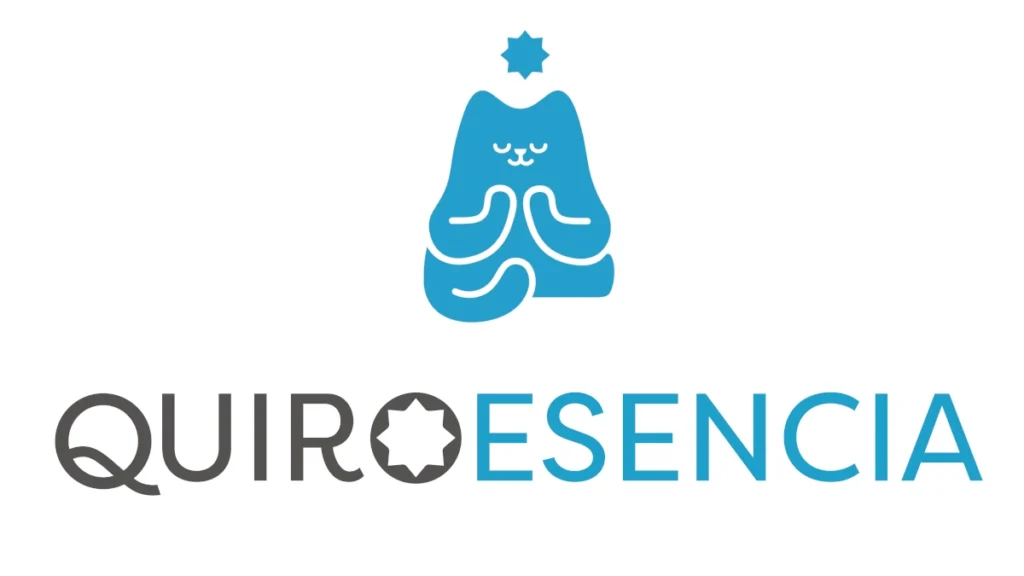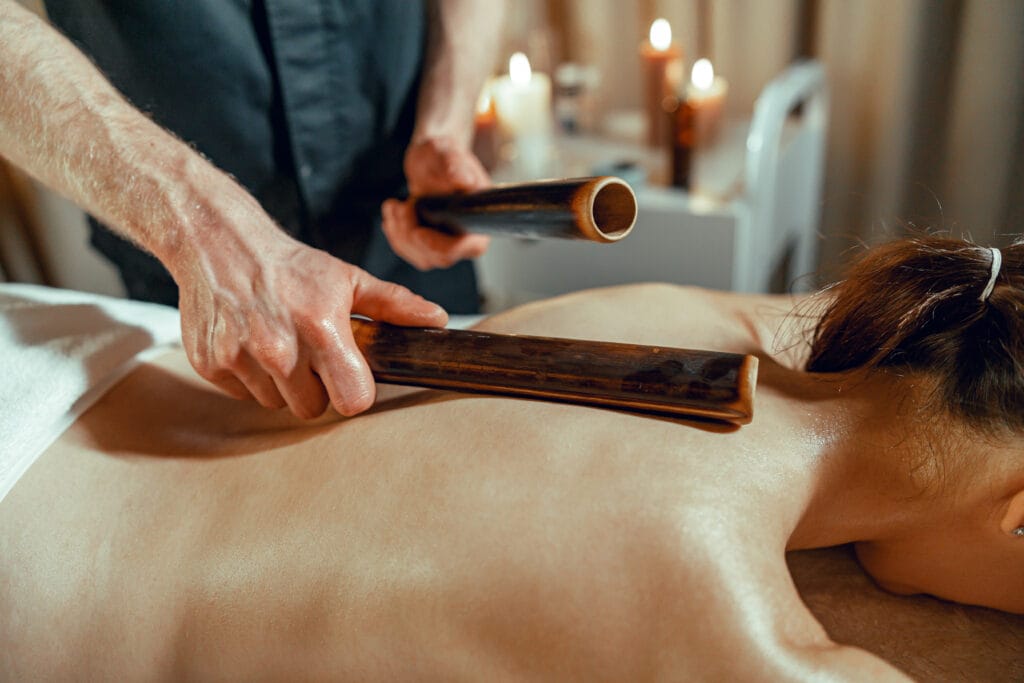What is chiromassage?
Surely you have had doubts about the differences between chiromassage and other types of massage, today we are going to integrate these differences to try to clarify doubts and be able to choose the most appropriate option for our body at all times.
A massage done with the hands… and with great intention
Chiromassage is, in essence, the art of healing with your handsThe word comes from Greek “quiros”, which means “hands”, and "massage", which we already know what it entails: working the body with pressure, friction and movements to relieve tension and improve health.
What makes chiromassage special is that does not depend on devices, machines or instruments, only through the hands of the practitioner and their ability to listen through touch. Yes, because hands "listen." Over time, one develops a sensitivity that allows one to notice where there is tension, stiffness, blockages... even if the person hasn't expressed it in words.
But it's not just about squeezing or rubbing. A well-done chiromassage has a clear intention: restoring the body's balance. And that requires technique, experience, and a connection with the person in front of you. As I often say in consultations: touching is not the same as treating.
There are many massages: how is chiromassage different?
Nowadays, if you search for "massage" online, you'll find an endless list of options: relaxing, sports, Thai, hot stone, lymphatic drainage... and they all have their purpose! But often, amidst so much variety, people don't know which one to choose or what to expect from each one. So, here are some of the most popular ones and how chiromassage differs from one to another:
Relaxing massage
It's the typical exercise you do when you're stressed and just want to unwind. The movements are gentle and repetitive, designed to induce calm and well-being. Its function is more emotional than physical: it helps release surface tension and mentally reset.
How is it different from chiromassage?
Chiromassage can have a relaxing effect, yes, but it goes much further. It seeks to release deep tensions, correct muscular imbalances, and improve circulation in specific areas. It's like comparing a linden tea with a manual physiotherapy session: both help you, but at different levels.
Sports massage
It is focused on muscle and physical performanceIt's often used before or after training, or to prevent sports-related injuries. It's more intense, faster, and focuses on very specific muscle groups.
And what about chiromassage?
Chiromassage can also be adapted to the athlete, but it is not limited to a fixed technique. The good thing is that adapts to what the body needs at that moment: release overload, work the fascia, stimulate reflex points... I have treated cyclists, dancers, runners and even people who do CrossFit, and I always adjust the technique according to how their body is that day.
Therapeutic massage
This is a very broad and sometimes confusing term. It encompasses everything from specific manipulations for specific ailments (such as sciatica, lower back pain, or neck pain) to rehabilitation techniques.
Where does chiromassage come in here?
Chiromassage is also therapeutic, but it is from a manual and comprehensive approach. It doesn't focus solely on the "symptom" (back pain, for example), but rather seeks the cause: is it poor posture? A muscular dysfunction? A visceral problem reflected in the muscles? That holistic view is what often makes the difference.
Oriental massage (shiatsu, Thai, etc.)
These come from ancient traditions and work with the energy of the body (what in the East is called who either chi). Shiatsu, for example, applies finger pressure to specific points, while Thai massage combines stretching and fairly intense mobilization.
And how does chiromassage fit in here?
Western chiromassage does not talk about energy, but yes it takes into account body balanceIn my case, having studied in Korea, I've learned to integrate certain Eastern ideas: for example, how tension in the abdomen can be reflected in the shoulders, or how an emotional block can manifest in the neck. Thus, chiromassage becomes a "mixed" technique: based on anatomy, but with a sensitivity to understanding the body as a whole.
The approach to chiromassage: body, mind and conscious touch
One of the most beautiful things about chiromassage—and what people appreciate most when they come for a consultation—is that it's not a "standard protocol." We don't apply the same sequence to everyone. Chiromassage It adapts to each person's body, to what they feel and need at that moment..
How it adapts to each person
Every body speaks its own language. Some people arrive very tense, with a neck like a rock, but what they need isn't hard pressure, but rather to first relax their nervous system. Others arrive with a severe overload in their legs, and although it may hurt a little at first, they need depth to release that tension.
The important thing is listen to the body with your handsAnd that's where "conscious touch" comes in: it's not just touching for the sake of touching, but rather sensing what tissue you're treating, how it responds, and when to change technique or intensity. That's why two people with the same back pain can receive completely different treatments.
Work on muscles, fascia and key tension points
In chiromassage we work much more than the superficial muscle. We also reach the fascia, those layers of tissue that surround muscles and, when tense, can limit movement and cause referred pain.
In addition, we locate key points of tension (also called trigger points), which are areas where the muscle has become "stuck," generating pain not only there but also in other parts of the body. For example, a point in the trapezius muscle can cause a headache or even a tingling sensation in the arm. Identifying and releasing these points is an essential part of the treatment.
Real benefits of chiromassage compared to other massages
One of the most frequently asked questions I get in consultations is:
“Is this just going to help me relax, or is it actually going to take away the pain?”
And my answer is usually: “It depends on what we do and how we work it, but well-applied chiromassage can do much more than relax.”
Let's see why:
Not only does it relax, it also corrects
Yes, chiromassage can be deeply relaxing. In fact, many people come off the table with the face of someone who's just had a two-hour nap. But what sets it apart from other massages is that does not stay on the surface.
We work with a therapeutic intention, seeking correct muscle and joint imbalancesIf one shoulder is higher than the other, if a hip rotates forward, if there's constant strain on the lower back... all of these can be addressed manually with the right techniques.
Improves posture and mobility
Many of the problems we deal with on a daily basis (neck pain, lower back pain, knee pain, etc.) have a postural originPoor posture at work, on the couch, sleeping, using a cell phone, etc. Chiromassage helps release the tension that keeps the body "off-kilter."
In addition, by working globally and not just on the painful area, we achieve improve joint mobility and muscle flexibilityMany people who came in with a stiff back or a blocked neck notice after a few sessions that they move better, more freely, and without pain.
Long-lasting pain relief
One of the great advantages of chiromassage is that the effects do not go away the next day, as can happen with some superficial massages.
By releasing deep muscles, deactivating trigger points and improving circulation in congested areas, we get the body to maintain that relief for longer.
Of course, there are cases where more than one session is needed (especially if the problem has been going on for months or years), but the important thing is that let's go to the root of the pain, not just to “patch” the symptom.
And best of all: many people end up discovering that chiromassage helps them not only to recover, but also to prevent relapses and take care of your long-term health.
When to choose chiromassage and when to choose another type of massage?
As we've seen, each type of massage has its uses. But sometimes, depending on how you feel or what's happening in your body, one or the other may be better for you. Here's a simple guide, based on what I see each week in my office:
If you have stress, anxiety or insomnia…
A relaxing massage can help you unwind and calm your nervous system. However, if that stress has already caused physical tension (contractures, neck or back pain, stiff jaw, etc.), chiromassage is more advisable.
Because? Because it not only relaxes the mind, but frees the body of those accumulated tensions that, many times, you didn't even know you had.
If you have muscle contractures or overload…
Here chiromassage is a 10. It is the ideal technique for release charged areas, such as the trapezius muscles, the lumbar region, or the legs. Whether due to work, overtraining, or incorrect posture, chiromassage acts on the deep muscles and It gives you back mobility and lightness.
Unlike a relaxation massage, which can be short, or a sports massage, which can sometimes be too fast, chiromassage gives you the perfect balance between effectiveness and sensitivity.
If you are injured or recovering…
In cases of injuries (tendonitis, lower back pain, recovered sprains, etc.), a thorough assessment is always necessary. If you are in the acute phase, it's best to see a physical therapist.
But if you are in the recovery phase or have chronic discomfort, chiromassage can help you a lot. speed up the process, improve healing and prevent relapses.
I work a lot with people who have been through injuries and are looking for a manual support therapy, without equipment, to help them move again without pain.
If you're looking to maintain your physical well-being over the long term...
Maintenance is key. Many people come once a month, or every 3-4 weeks, not because they have pain, but because they know they need it. your body thanks youAfter all, the body accumulates tension without us realizing it: work, cell phones, the gym, stress...
In these cases, chiromassage works as a “tune-up”: it balances, relaxes, corrects and keeps you fit without waiting for pain to appear.
So… when should you choose another massage?
- If you just want to relax for a day and mentally disconnect → relaxing massage
- If you are a high-performance athlete and need something specific pre- or post-competition → sports massage
- If you are interested in the energetic or more spiritual approach → oriental massages such as shiatsu or Thai
But if you search Real physical relief, postural improvement, deep, personalized work with expert hands, chiromassage is a safe bet.
The benefits of chiromassage are multiple: Relaxes, corrects, improves mobility, relieves pain and prevents future injuriesBut what really makes it special is that it's not a quick fix or a superficial one. Each session is designed to help your body maintain these benefits over the long term, improving your well-being in a lasting way.
If you've ever felt trapped in a cycle of recurring pain, muscle spasms, or stress that won't go away, chiromassage may be the answer. And if you're just looking for keep your body in balance and prevent future problems, this therapy will accompany you throughout the entire process.
Remember, the body speaks, and chiromassage listens. If you haven't tried it yet, now's the perfect time to do so!

